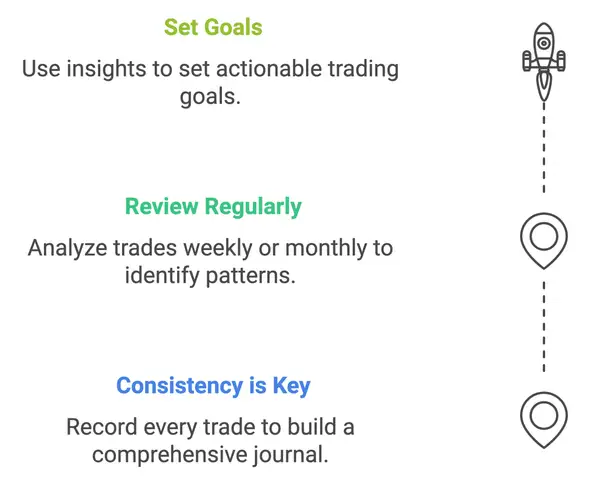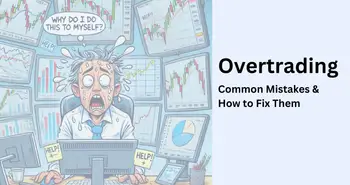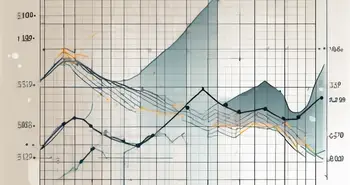How to Keep a Trading Journal? Easy Tips for Trade Tracking

Imagine you’ve just made a trade that didn’t go as planned. You might feel frustrated, wondering what went wrong, or even tempted to jump into another trade to “make up” for the loss. It’s easy to get caught in this cycle, especially when emotions take over. But now, picture this: instead of rushing into the next trade, you open up your trading journal and review your previous entries.
You notice a pattern. Maybe you tend to buy into certain assets impulsively, or perhaps you see that trades taken in specific market conditions haven’t worked out well.
This isn’t just hypothetical; it’s something countless traders experience, and keeping a journal is one of the most effective ways to break that cycle.
Why Keep a Trading Journal?
A trading journal is more than a log of your trades; it’s a window into your decision making process and a record of your progress. Each entry holds valuable insights, helping you spot what works and what doesn’t. By taking just a few minutes to jot down the details of each trade like your entry and exit prices, position size, and even your mindset, you start building a clear picture of your habits and strategies. Over time, this habit helps you become more objective, replacing guesswork with data-backed adjustments.
Whether you’re trading stocks, crypto, or forex, a journal can uncover both your strengths and areas for improvement, highlighting where you excel and where adjustments are needed.
What to Record on a Trading Journal?
To get the most out of your trading journal, make sure to record these key details for every trade:
- Trade Date and Time – Knowing when you entered and exited a trade can help you analyze patterns in market timing.
- Asset/Instrument Traded – This helps you track performance across different asset types.
- Entry and Exit Price – Critical for assessing the profit or loss on each trade.
- Position Size – Documenting the size of your trade can highlight if you’re taking on consistent levels of risk.
- Trade Outcome – Recording the result is essential for understanding overall profitability.
- Emotional Notes – Consider jotting down a brief note on your emotions or mindset during each trade, as psychological patterns can greatly impact trading decisions.
Why Include Emotional Notes?
By tracking your emotional state, you can identify behavioral patterns that might influence your trades. For instance, noticing consistent losses during high-stress times might help you avoid trading during those moments in the future.
How to Set Up a Basic Trading Journal
Digital or Physical Options
- Digital – Tools like Excel, Google Sheets, or Notion make it easy to track and update your trades on the go. They also allow for charts and quick data analysis.
- Physical – Some traders prefer the tangibility of a notebook, which can make reviewing entries feel more personal and reflective.
Trade Journal Template Example
A simple table format is often all you need. Here’s a basic structure you can use:
| Date | Asset | Entry Price | Exit Price | Position Size | Profit/Loss | Notes |
|---|
| 2024-11-06 | BTC/USD | $74,000 | $76,000 | 0.5 BTC | +$1,000 | Entered trade anticipating price increase due to positive market sentiment. |
Benefits of Keeping a Trading Journal
- Tracking Performance – Journaling gives you a visual representation of your trading progress, letting you see gains and losses over time.
- Identifying Patterns – When you consistently record each trade, you start spotting patterns—both good and bad. You might notice a tendency to sell too early or identify that certain strategies work best under specific conditions.
- Improving Discipline – Keeping a journal builds discipline, as it requires consistency. This habit reinforces a mindful approach to each trade, making it easier to stay focused on long-term goals rather than impulsive decisions.
Tips for Using Your Trading Journal Effectively

The Long-Term Value of a Trading Journal
A simple, consistent trading journal can transform the way you approach trading. It’s a tool that grows with you, providing both new and experienced traders with a personal roadmap to improvement. Start small, whether it’s with a spreadsheet or a notebook, and build the habit over time. You’ll likely find that journaling not only improves your trades but also deepens your understanding of your own trading style.
FAQ
What should I include in my trading journal?
Your journal should contain details about each trade, including date, entry and exit points, market conditions, outcomes, emotional state, and lessons learned.
How often should I update my trading journal?
It's recommended to update your trading journal daily or weekly to maintain a clear perspective and ensure that you capture all details accurately.
Can a trading journal really improve my performance?
Yes, maintaining a trading journal fosters self-awareness and facilitates better decision-making, leading to enhanced trading performance over time.
Is there a specific format for a trading journal?
There isn’t a one-size-fits-all format. Choose either a digital spreadsheet or a physical notebook based on your preference and ensure it includes the necessary sections.
Pairing a trading journal with a platform like Morpher can make your journey even more effective. Try yourself now!
Morpher offers unique features that align perfectly with budget-conscious and analytical traders, such as zero-commission trading, fractional shares, and advanced charting tools that enable you to record and mark trades directly on the platform. These advantages mean that every dollar invested on Morpher works harder for you, allowing you to focus on refining your strategies without worrying about high fees cutting into small-budget trades.
With a trading journal, you’re empowered to make data-backed decisions, and with a versatile platform like Morpher, you gain flexibility and cost-efficiency. Together, they provide a solid foundation for continuous improvement, making each trade an opportunity to learn and grow. Start your trading journal today, and let Morpher support you in refining your strategy with each trade you make!

Disclaimer: All investments involve risk, and the past performance of a security, industry, sector, market, financial product, trading strategy, or individual’s trading does not guarantee future results or returns. Investors are fully responsible for any investment decisions they make. Such decisions should be based solely on an evaluation of their financial circumstances, investment objectives, risk tolerance, and liquidity needs. This post does not constitute investment advice.

Painless trading for everyone
Hundreds of markets all in one place - Apple, Bitcoin, Gold, Watches, NFTs, Sneakers and so much more.

Painless trading for everyone
Hundreds of markets all in one place - Apple, Bitcoin, Gold, Watches, NFTs, Sneakers and so much more.








